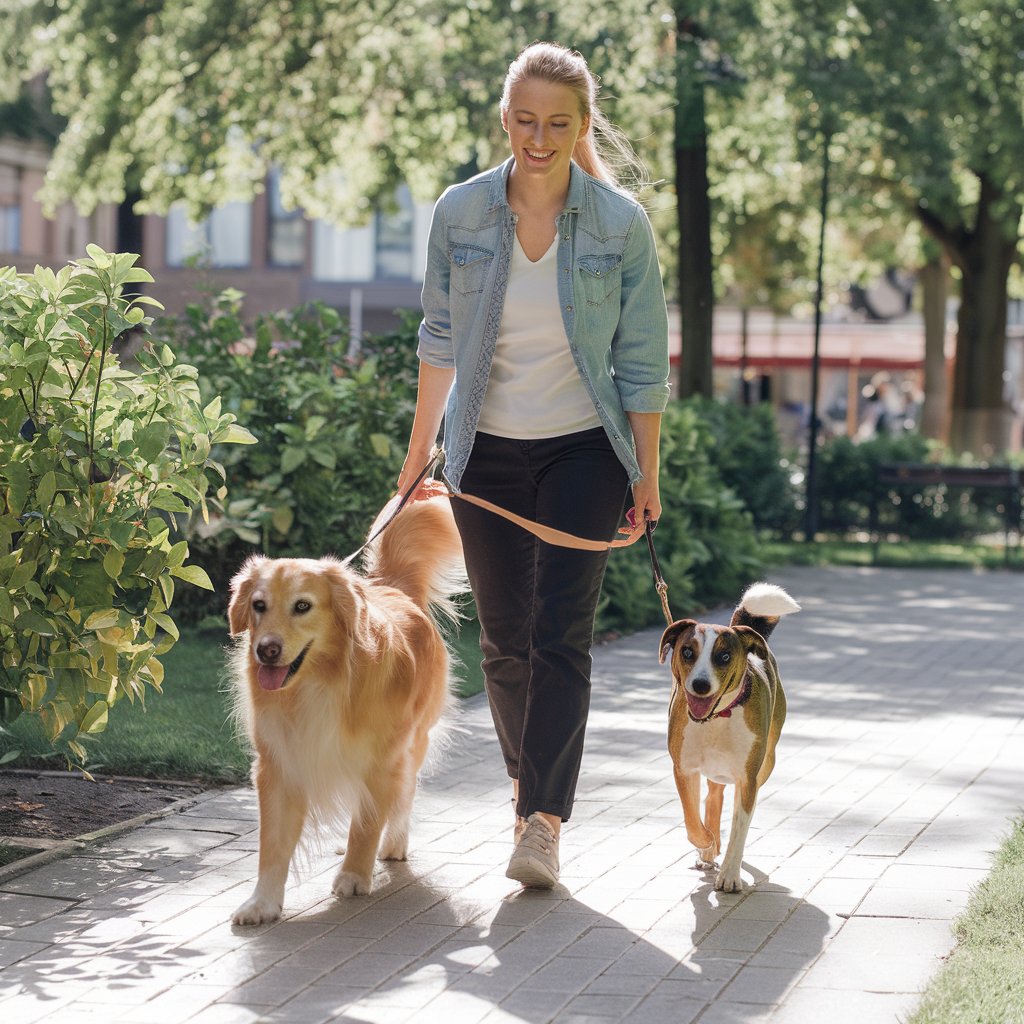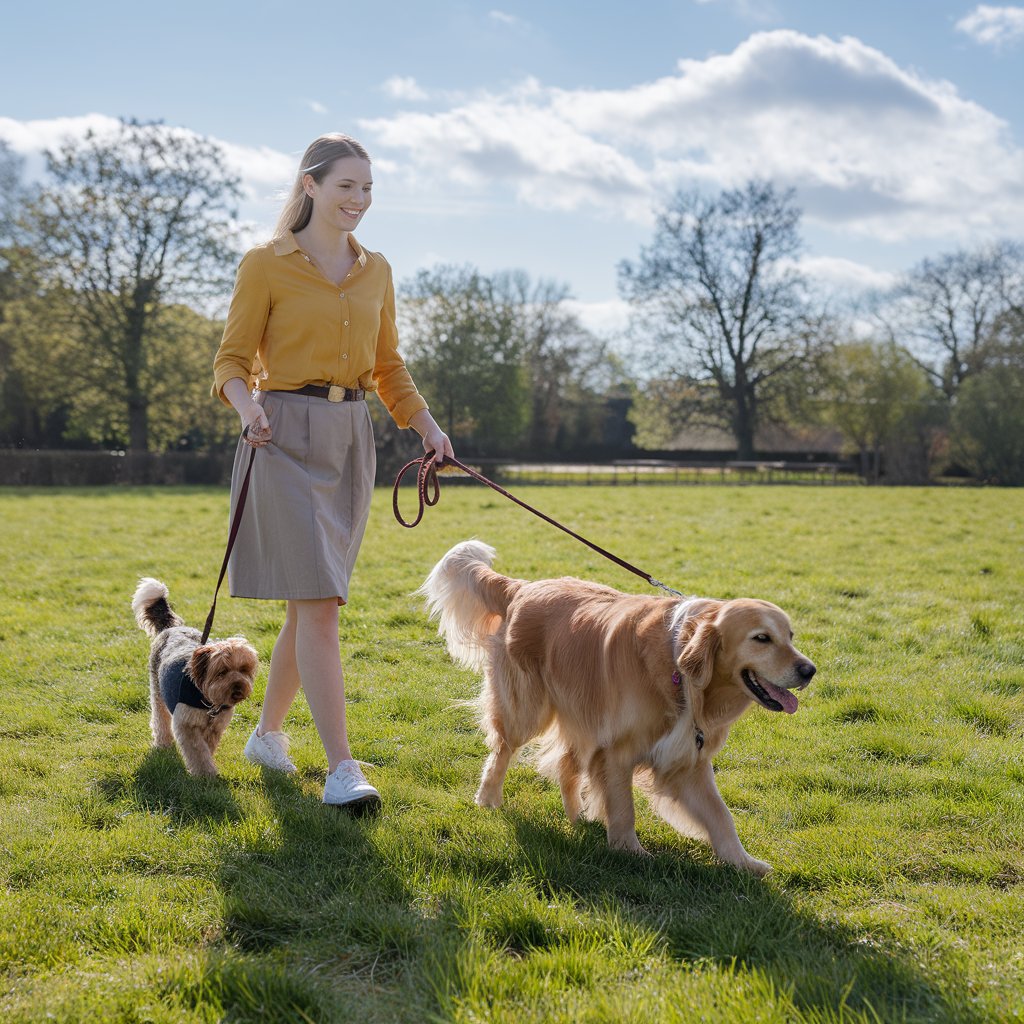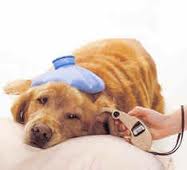
The Essential Guide to Creating a First Aid kit for Your Pet
Many households have a furry, feathered or even scaly member of the family but have you ever considered what you would do if they got hurt?
Whilst you may plan on heading straight to the vet, there are some injuries which can be easily treated at home, and others which require immediate treatment in order to avert a tragedy.
It's therefore highly advisable to have a comprehensive First Aid kit for your animals ready to use in case the worst happens. But the types of items you need are very different than what you might have in your own medicine cupboard and if you try to use human treatments, you could end up making the situation worse.
We've put together a step by step guide to creating your own pet First Aid kit along with some extra measures you can take to make sure you are prepared.
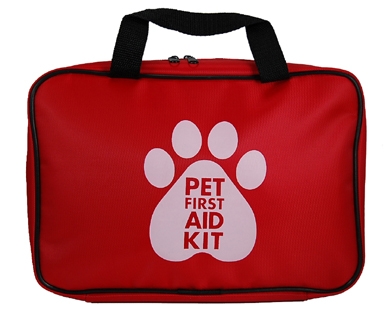
Pet first aid kit
Image Source: https://www.pettravelcenter.com/img/products/Pet_First_Aid_Kit.jpg
Some basic tools
No matter what pet you have, there are some basic implements which could come in handy if you need to administer First Aid. The following should be part of any kit:
Eye-dropper (or large syringe): Not just for administering eye or ear drops, this can also be used to give oral fluids or flush out a wound.
Scissors: Useful for a myriad of purposes, they are perfect for snipping out chunks of matted fur as well as cutting bandages, gauze and so on. Special bandage scissors can be a helpful addition; these have a blunted edge which allows the scissors to slip between the bandage and skin without cutting or grazing your pet.
Tweezers: To clear foreign bodies from wounds or to pull out splinters or thorns. Less likely than fingers to snap off part of the offending object, leaving part stuck deep inside a paw etc.
Tick removal implement: Not an essential, but if you live in an area with lots of tics or you enjoy hiking or countryside activities with your pooch, it could be a good investment. Makes tick removal simple plus reduces the risk of nasty pathogens being released into your pet's bloodstream.
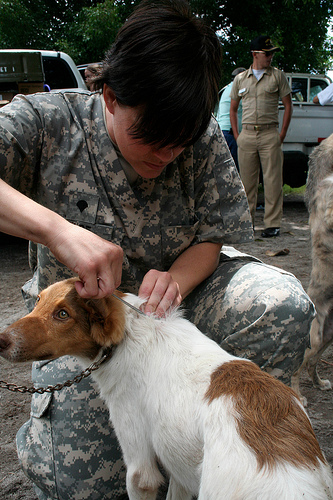
Tick removal
Image Source: https://farm5.staticflickr.com/4050/4711443255_839ec2d90c.jpg
Toenail clippers and styptic pencil: Even a relatively small injury such as a torn nail can get infected if not treated. A styptic pencil will stem the blood flow whilst clippers help you tidy up the damage.
Staple supplies
Your pet First Aid kit should be suitable for dealing with a range of emergencies. To do this, the following supplies should be on hand:
Blanket/towel: Although you might have plenty in your house, it's a good idea to keep one in your pet First Aid box. This saves you trying to find a clean one in the event of an emergency. Use to wrap your pet to combat shock or as a stretcher to lift an immobile animal.
Gloves: You may not be worried about getting your hands dirty but with open wounds you could introduce bacteria or easily spread infection. A box of latex disposable gloves will protect your pet from cross contamination.
Muzzle: The idea may seem silly right now but if your pet is in the throes of pain, they could lash out without realising. As well as inflicting injury, it could also make it difficult to treat even the simplest of problems.
Plastic bags: The easiest way to deal with a foot injury en route to the vet. Simply tape over the foot, it will keep the injured part sterile and also stop blood seeping onto furniture, carpets or your vehicle.
Roll gauze: By purchasing in a roll rather than short strips, you can use gauze to staunch a wound, bandage an injury or even padding for a splint.
Tape: Easy to tear with a strong adhesive, it sticks well to your pet's skin. The best type is micropore tape, designed for this purpose. As an emergency temporary measure, duct tape can be used.
Telfa pads: You may not have known their name, but these are the non-stick pads which are used over a wound. If you run out, a nappy or a sanitary pad can act as a make-shift.
Thermometer: For most pets this means a rectal reading so don't forget a gentle water-based lubricant too. Research the normal vital signs for your pet in advance and tape the temperature range to the thermometer box, or the inside of your First Aid kit, so you don't have to rack your brains when faced with an unwell animal.
Vet wrap: A type of self-cling gauze, this is an approved bandage wrap which offers a degree of water protection. Perfect for animals as it doesn't rip off fur when removed, it should be applied with a slight degree of pressure. Do not apply too tightly as it can cut off circulation.
Essential medicines and treatments
Whilst it's not usually a good idea to give your pet medicine without the thumbs up from your vet, there are occasions when it is appropriate – or even vital – that you administer treatment. A lot of human medicines are lethal if given to dogs so keeping a supply of the following pet supplies could come in handy:
Antibiotic ointment: Available over the counter, it's suitable for applying to external grazes and cuts and helps prevent infection. Take care about putting in on animals that can lick it off! Absorbed topically, it is not suitable for use on every occasion so use with discretion.
Antiseptic wipes: The simplest way to cleanse a wound; opt for a non-sting formula such as betadine or chlorhexidine.
Diphenhydramine: Commonly known as Benadryl, a handy drug to have in the case of allergic reactions or stings. Check with your vet first about what dose is appropriate.
Haemostatic agent (such as QuikClot): To stop blood flow quickly. Useful to carry while you are out and about.
Sterile eye wash: To wash out the eyes in case of foreign bodies or contact with harmful substances.
Sterile saline wash: Useful for many situations including flushing wounds or foreign bodies from eyes. Also helpful in the case of smoke getting in the eyes and causing stinging and discomfort.
Washing up liquid: This is one of the easiest ways to quickly wash toxins from a pet's skin or fur. If used, make sure it is thoroughly washed off afterwards.
Water: Whilst you might not need to store this in a First Aid kit you plan on keeping at home, it's a good idea to have some bottled water in a mobile pack. Useful for rehydration, cooling down to prevent heat stroke, soaking an injured paw and washing off toxins.
Exotic animals and special needs
Any First Aid kit which you put together will obviously vary depending on the type of pet you have. Whilst many of the above items will be useful for the vast majority of animals, some more unusual species may need a few extra additions. This is also true for any pet with special medical needs. Here are some more ideas about what you might want to include:
Diluted tea tree oil: Many small animals such as rats suffer from skin complaints; diluted tea tree oil (containing at least 5% tea tree) can help clear up a wide range of conditions. This is useful for humans too!
Electrical tape: For temporary emergency shell repairs for tortoises.
Epi-pen: Only to be used in life or death situations on animals who are known to have a fatal allergy.
Honey or glucose: Kept as an emergency supply for diabetic animals. Consider also keeping corn syrup as this can be rubbed on the gums if the animal is not able to swallow.
Mini ICU tank: Spiders and small reptiles often suffer from dehydration which can be fatal if left unchecked. A special tank which can be used with a heat pad helps to get fluids in quickly. Spider tanks often have a 'mound' in the centre where moistened pads/towels can be placed.
Superglue: Invaluable for spiders with broken/damaged legs. Often also used on parrots who have damaged blood feathers.
Wire cutters: Small animals can easily get caught in the cage, or trapped in toys such as igloos which have come apart. Wire cutters help you release them quickly before serious injury occurs.
Non-medical supplies
In any First Aid kit, it's a good idea to keep a list of essentials so you aren't left scrabbling around in the event of an emergency.
This could include your vet's telephone number, the out of hour’s emergency number, contact details for the relevant poison helpline and a copy of your pet's medical history. It can also be a good idea to have these numbers programmed ready into your mobile phone.
Make sure you know exactly how to reach your vet's surgery, including the emergency practice as this might be in a different location to your regular appointments.
Other considerations
Whilst a First Aid kit for your pet should be seen as an essential part of their care, there's a few simple steps you can take to maximise its effectiveness.
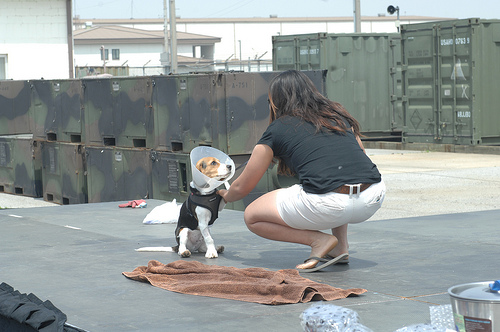
A pet first aid course is a great idea
Image Source: https://farm8.staticflickr.com/7099/7151777553_51d0a6b7e2.jpg
Educate yourself by reading pet First Aid books or watching tutorials online. YouTube is a great resource which is free to use.
Consider attending a pet First Aid course, specifically designed for your type of animal. A reptile will have very different needs for example than a cat or a dog.
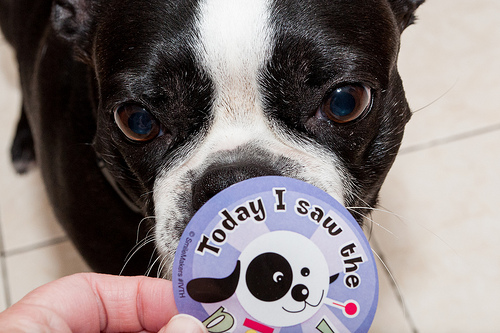
Yes even vets like to get badges too!
Image Source: https://farm8.staticflickr.com/7276/7712891140_755bbc3f41.jpg
Conclusion
It doesn't take long, or cost much, to put together a comprehensive First Aid kit; the vast majority of the items can be found either on the high street or from your local veterinary practice. You may not be able to deal with every emergency without medical assistance but by having these items on standby, you will be giving your pet the best chance of making it, as well as cutting down on the discomfort and pain they have to suffer.
Image Credits: Pet Travel Centre, 807MDSC, USAG-Humphreys






